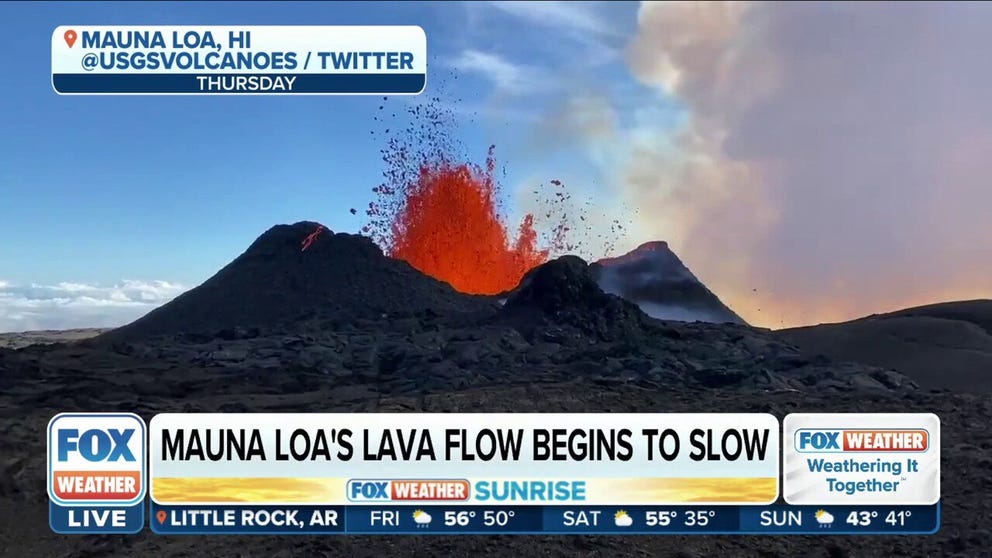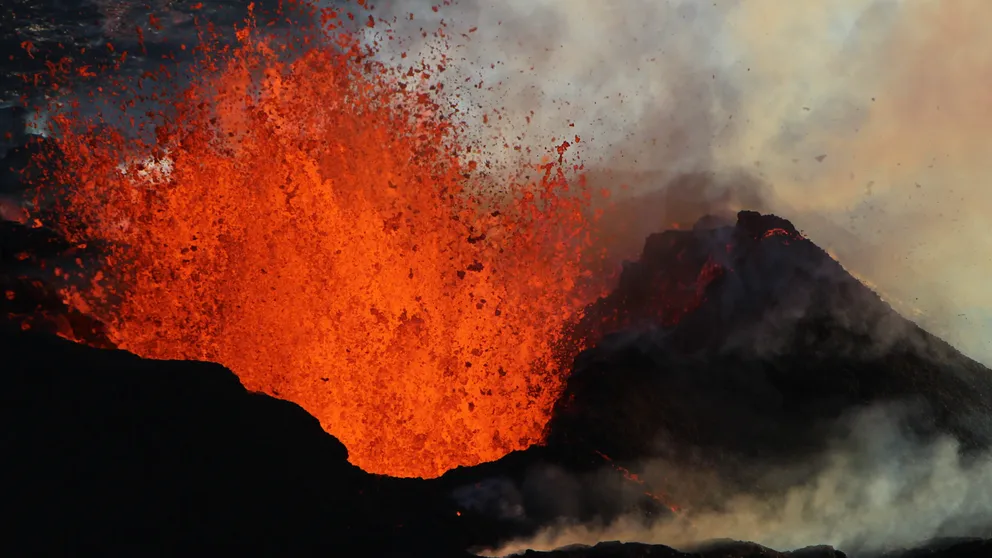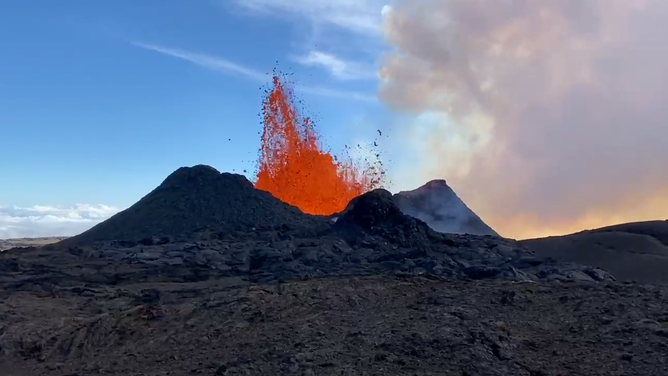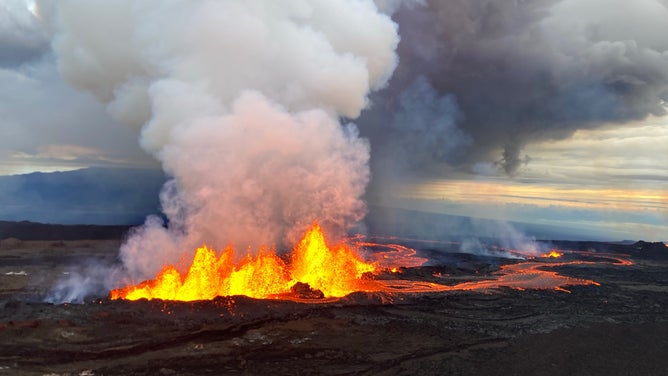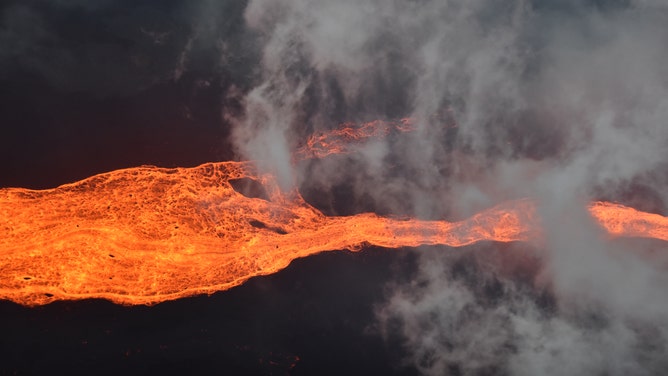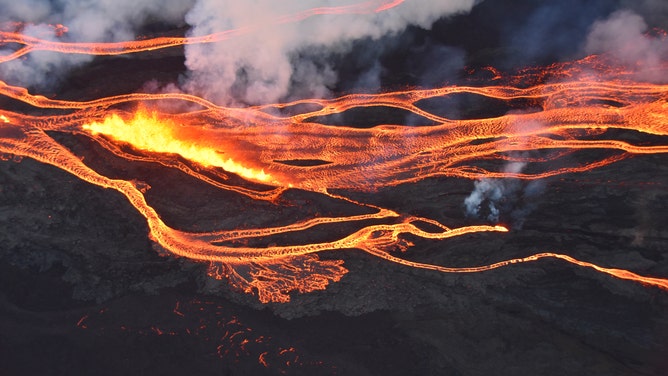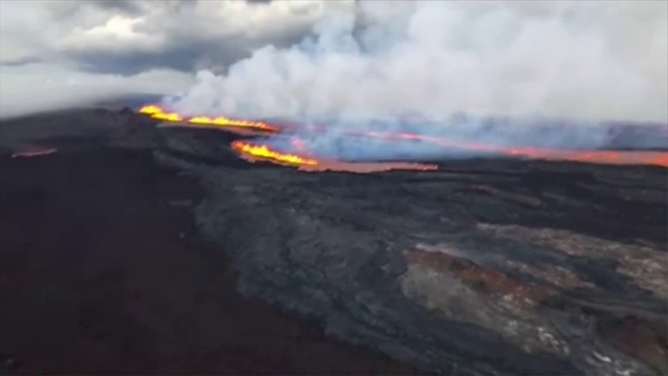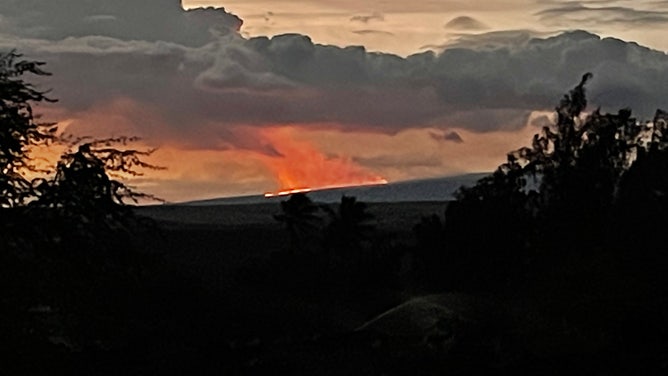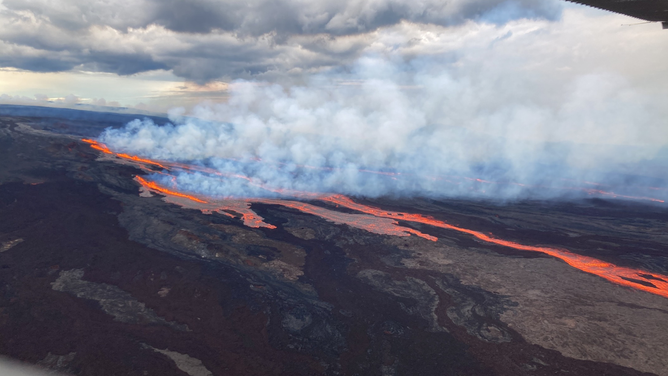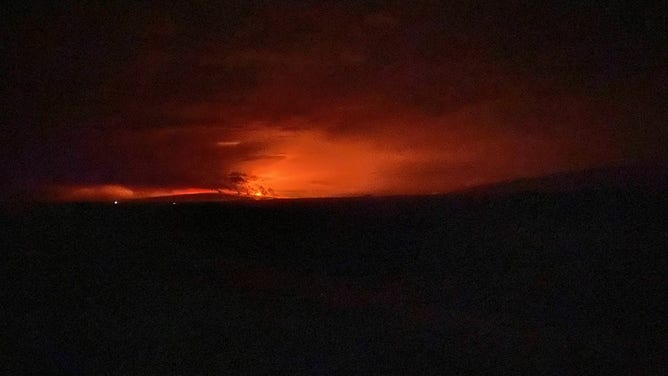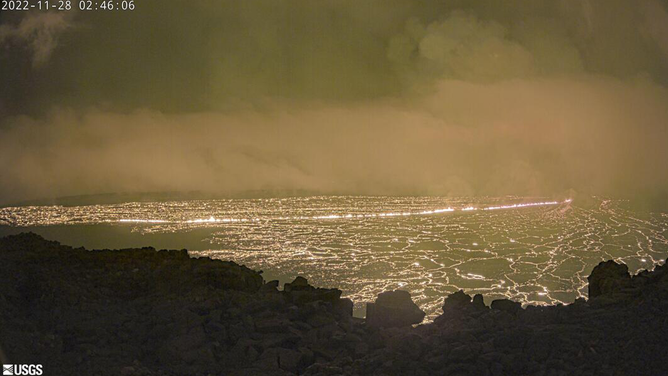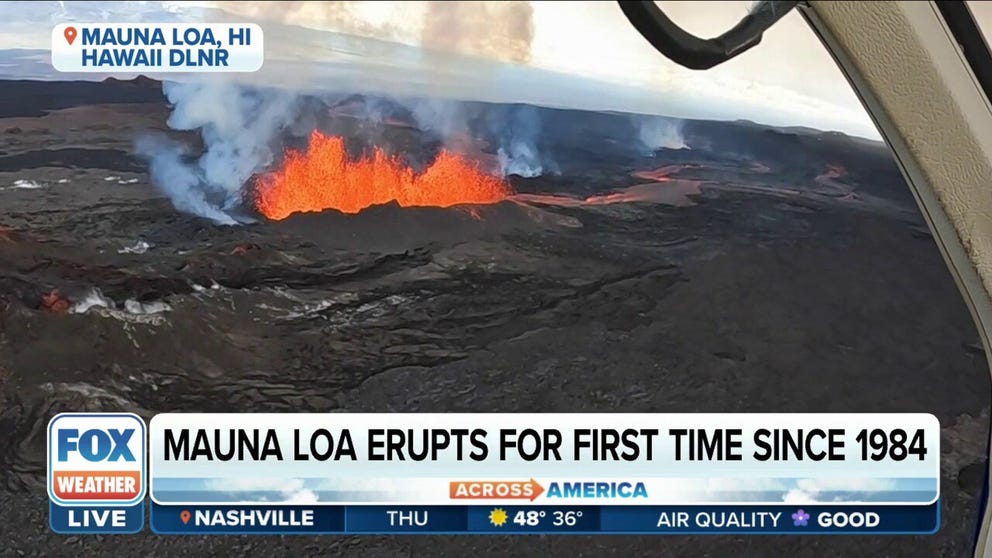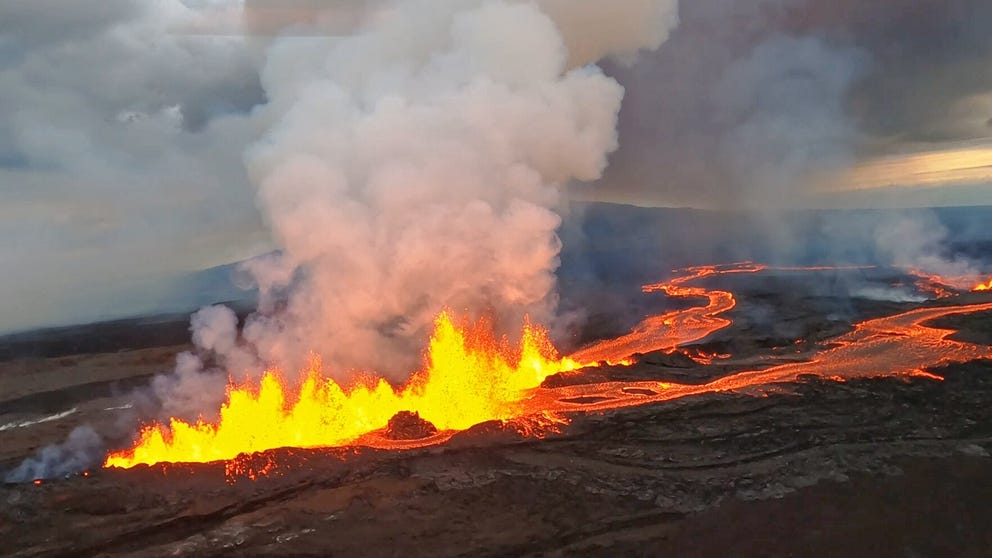Hawaii's Mauna Loa volcano spews 'lava fountain' of liquid rock into air as lava flows slow
Hawaii's Mauna Loa volcano began to erupt on Sunday for the first time since 1984. It was the longest period between eruptions on record before the volcano awakened.
Watch: Mauna Loa continues erupting, shooting lava into the air
Lava flows from Hawaii's Mauna Loa volcano are slowing but will begin to spread out and inflate.
MAUNA LOA, Hawaii – Stunning video shared Thursday by the U.S. Geological Survey showed lava from an active fissure on Hawaii's Mauna Loa volcano spewing blebs of liquid rock into the air.
Mauna Loa, the world's largest active volcano, began erupting Sunday night after remaining quiet for nearly 40 years.
"Ah...nothing like a good lava fountain to meditate on," the USGS said in a tweet about the video featured at the top of this story.
Mauna Loa eruption: See all of the most incredible volcano footage
The eruption of Mauna Loa, the world’s largest active volcano, began on Nov. 27 after remaining quiet for nearly 40 years.
The last time Mauna Loa erupted was in 1984, and when the eruption began on Sunday, it ended the longest streak on record between eruptions.
According to the USGS, two active fissures have been feeding lava flows downslope, with lava from Fissure 3 flowing to the north toward the Daniel K. Inouye Highway (Saddle Road).
However, scientists said the lava flows have slowed down significantly as expected, because they have reached relatively flatter ground around the rumbling mountain.
SPACE TRAINING FACILITY IN HAWAII THREATENED BY LAVA FROM MAUNA LOA
Fissure 3 remains the dominant source of the largest lava flow, and the movement slowed Thursday to about 0.025 mph or 131.2 feet per hour. Lava flow rates may be highly variable over the coming days and weeks because of the way the lava is situated on flat ground, according to the USGS.
At the current rate of movement, it might take about a week for the lava to reach the Daniel K. Inouye Highway, which was about 3.2 miles away as of Thursday afternoon. However, the USGS noted there are many variables at play that could change both the direction and timing of flow advances, so residents are advised to follow advice from local officials and respond accordingly.
KEY CLIMATE CHANGE MONITORING SITE TAKEN OFFLINE BY MAUNA LOA ERUPTION
Officials keep eye on lava threatening Mauna Loa highway
Hawaii County Mayor Mitch Roth joins FOX Weather to discuss the lava flow from the Mauna Loa volcano that is threatening the DKI Highway.
Fissure 4 is also still active, with lava flowing to the northeast, though the small lobe that was moving to the east from Fissure 4 has stalled.
In addition to the lava, the eruption of Mauna Loa is sending volcanic gas plumes high into the air, and Pele's Hair is actively falling in the Humu'ula Saddle area.
Pele's Hair refers to thin strands of volcanic glass fibers formed from gas amid explosions within the turbulent cauldron.
WHAT MAKES 'PELE'S HAIR' DURING A VOLCANIC ERUPTION?
According to the USGS, tremors are continuing at a high rate, which indicates magma is still being supplied to the active fissures on Mauna Loa. Activity is likely to continue as long as those tremors persist.
Scientists said they don't anticipate eruptive activity outside the Northeast Rift Zone, and no property is currently at risk.
Mauna Loa history
See the latest jaw-dropping footage of Hawaii's Mauna Loa spewing lava
In the latest from Hawaii’s Mauna Loa volcano eruption, dramatic video shows an active fissure shooting lava nearly 150 feet into the air.
Since 1843, Mauna Loa has erupted 33 times, averaging an eruption every five years. However, most eruptions before 1950 had an average frequency of 3.5 years. Since 1950, there have only been two eruptions – a summit eruption in 1975 and a rift eruption in 1984.
